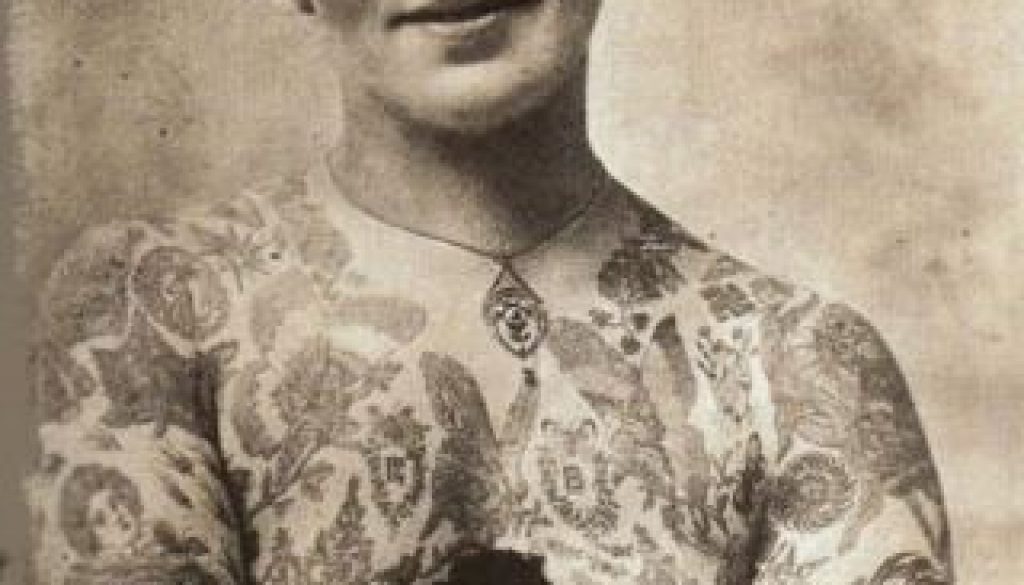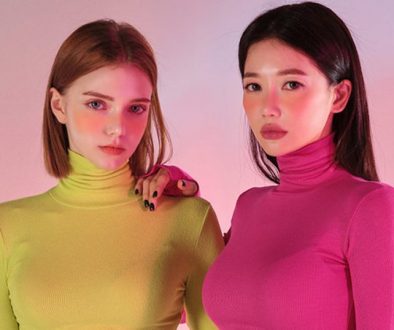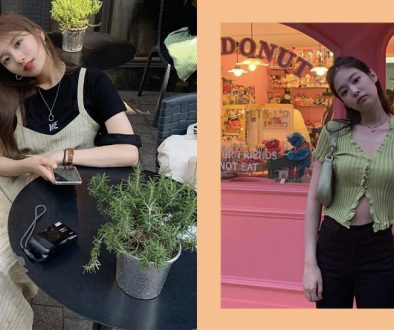Everything Old is New Again: Surprisingly “Modern” Fashion Trends of the Victorian Period

Mourning portrait
Looking through Victorian portraits, you’d be forgiven for thinking that all anyone ever wore was black. Mourning had its own trends and traditions—enough of them that we could write another entire article about them—but what about the rest of the time? Surely people didn’t wear black every day.
Black wasn’t even common for menswear before Beau Brummell set the trend that was to last through the next two hundred years (and counting). Famous for his hours-long morning routine as well as his feelings on boot maintenance*, Brummell’s true legacy surrounds us every day. Prior to his championing simple and elegant menswear in dark colors, many men of fashion dressed as ostentatiously as women, wearing bright colors, makeup, wigs, and high heels. Brummell’s influence changed all of that and set the tone for fashion for the rest of the nineteenth century and beyond. All clothing became more conservative, serviceable, and monochrome, right?
Not exactly.

Studio portrait
With fashion history, there are two major things that lead to serious misunderstandings: portraits and survival bias. Photography was still rare, and mainly used for special occasions. If you only had one chance to preserve your likeness, you would probably want to present yourself in the best (and most universal way) possible—serious, capable, well-dressed. What people wore in pictures wasn’t necessarily what they liked to wear every day.
Survival bias is a term used to describe the skewed view we get by assuming pieces that have survived to the present day are representative of common sizes, styles, etc. The opposite is true: unless carefully preserved for posterity, most pieces that survived did because they were too small to be of any use to anyone. Clothing was incredibly expensive, and it was often patched until it fell apart, or deconstructed and re-fitted as a hand-me-down for someone else. Finer fabrics and useful shoes would have been worn until they were useless or actually disintegrated, while clothing and shoes too small to wear might have been kept just in case someone else needed them. Very few people could fit into a dress with a twenty-inch waist; it’s worth noting that there are far fewer surviving examples closer to the thirty-inch mark, which is where most women probably fell. Likewise, stranger trends or things that would have fallen out of fashion more quickly may be harder to find because they were rarer to begin with, not to mention less likely to be passed down.
With all that out of the way, today we’re going to be looking at a few nineteenth century fashion trends that feel like they should be too modern for the period. Every generation wants to think they’ve invented something new, but inspiration doesn’t often come out of thin air. Let’s take a look.
Unnaturally Colored Hair: Wig powder in colors like pastel pink, purple, and blue had been popular throughout the eighteenth century, but bright colors didn’t entirely leave when wigs started to go out of fashion. In the beginning of the century, Henry Cope became known as “the Green Man of Brighton” because he powdered his hair green. No one could doubt his devotion to his favorite color—his clothes, apartment, and even his poodle were also green, and he was never seen eating anything other than green fruit and vegetables.
Hot pink: In 1860, two new aniline dyes were developed for clothing: magenta and solferino (like fuchsia). Magenta was so popular that it was referred to as “the queen of colours” and was used to dye dresses, underwear, petticoats, ribbons, bonnets, and stockings. That’s right—the most popular color of the 1860s was neon pink. Black and white photography doesn’t really do it justice.

Unknown woman, 1896. I think we can all agree she is absolutely killing it
Menswear for women: Anne Lister wasn’t the only woman rocking a waistcoat. During the 1860s, traditionally masculine items like coats, jackets, waistcoats, and cravats became popular for women—who wore them tailored properly, of course. Years before Marlene Dietrich wore that tux, Victorian women slayed in top hats and cravats. While the definition of ideal womanhood became more and more constrained, there were always women who pushed boundaries and did exactly as they pleased—and more than you might expect. In the early 1860s, one of the most popular items for women was the Garibaldi jacket – a very masculine military coat in bright red with gold trim. Even when menswear went out of style again, some continued to wear more masculine clothing for their own reasons. While we don’t know for sure how common this was, the fact that menswear for women existed at all indicates that there was demand for it and that many tailors may have been more open-minded than you’d expect. Either way, it’s a good look.
Brightly colored underwear: Around the mid-nineteenth century, elaborate undergarments became a necessity for giving those enormous skirts their fashionable bell shape. Along with crinolines to hold the skirts up, women would wear corsets, petticoats, chemises or chemisettes, and sometimes knickers. Underwear could be as detailed as the dresses that covered it, and it was designed to be seen—even if only in private. To keep it interesting, all of these pieces were often dyed bright colors—especially brilliant red.

Hannah Cullwick wore a chain padlocked around her neck. Here she is in menswear giving exactly zero fucks
Patterned tights: Stockings came in more varieties than just black or beige. They came in plaid, stripes, any solid color imaginable, and some had embroidery or different patterns on them as well.
Fetish gear: In the 1870s, there was a trend for women to wear a scarf tied around their knees or very low around the hips and across the pelvis. These scarves were nicknamed “fig leaves,” and they were worn to attract men with the suggestion that the woman was “tied up at his mercy.”
Less about fashion and more about submission, Victorian housemaid Hannah Cullwick used to wear a chain padlocked around her neck to show her devotion to her lover—and later husband—Arthur Munby. They were involved in a decades-long Dom/sub relationship, and only Munby had the key.

Johanna von Klinkosch in fishnet sleeves
Goth accessories: In 1875, dog collars, chokers, and chains were some of the most popular jewelry trends. Bats, crucifixes, and insects were common motifs for accessories throughout the decade, and daggers that opened into fans were a must-have. Although it’s difficult to find written references to fishnet or fishnet clothing prior to about 1900, here’s an actual photo of Johanna von Klinkosch wearing fishnet sleeves in the 1870s. Madonna, who?
Cosmetics: The idea that no one bathed prior to 1900 is ridiculous. Victorians bathed regularly, and while being fully immersed in water might not have been as common, people would still wash with cloths, water, and a variety of soaps and skincare products. Showers had taken on their modern form by the end of the nineteenth century. Makeup did tend to focus on skincare, but rouge was worn on the lips and cheeks, and lamp black was used as mascara, eyeliner, or to darken the eyebrows. That’s right—eyebrows in the 1800s could be just as on fleek as they are today. Application was subtle, but some products packed more of a punch. Pale, semi-translucent skin was so popular that some—like Virginie Gautreau, John Singer Sargent’s Madame X—dusted themselves with violet powder to neutralize the warmth in their skin and make it appear ghostly white. By the end of the nineteenth century, cosmetics weren’t discussed as vice or virtue, but were seen as a logical part of any lady’s daily beauty regime.
 Tattoos: Before the nineteenth century, tattoos in the Western world tended to be something one got on religious pilgrimages, but all of that changed during the Victorian period. Initially more common among sailors, soldiers, and convicts, tattoos grew in popularity across society throughout the nineteenth century and were even instrumental in a high-profile court case. In the 1870s, a man claimed to be Roger Tichborne, the missing heir to the Tichborne baronetcy. The claim was thrown out when it was discovered that the real Tichborne had several tattoos, and the claimant had none.
Tattoos: Before the nineteenth century, tattoos in the Western world tended to be something one got on religious pilgrimages, but all of that changed during the Victorian period. Initially more common among sailors, soldiers, and convicts, tattoos grew in popularity across society throughout the nineteenth century and were even instrumental in a high-profile court case. In the 1870s, a man claimed to be Roger Tichborne, the missing heir to the Tichborne baronetcy. The claim was thrown out when it was discovered that the real Tichborne had several tattoos, and the claimant had none.
Tattoos became popular among the elite in the 1880s. The Prince of Wales and his son, Albert Victor, both had them, and they weren’t the only ones. Several members of the aristocracy—both male and female—got them, and from there, the craze only really expanded. A number of professional tattoo artists set up shops during the late nineteenth century, and following the invention of the electric tattooing machine in 1891, the were available to almost anyone. Some tattoos were even permanent makeup—some women preferred to have their eyebrows and rouge tattooed on.
Nipple piercings: In the late 1890s, a woman wrote into Society magazine about the

Chokers and crucifixes were popular in the 1870s and the 1990s
trend for nipple rings, detailing her own experience getting them and reporting that they gave her an “extremely agreeable titillating feeling.” Society wasn’t exactly a serious publication, but this wasn’t the only report of the phenomenon. In the late 1890s, there was a trend for women—usually wealthy women because of the prohibitive cost of the jewelry—to get nipple piercings. Many had to travel to Paris to do it, but one Bond Street jeweler reported that he had pierced the nipples of no fewer than forty ladies and young women. They wore rings or studs of gold, with or without jewels, and often connected the piercings with a chain. One actress at the Gaiety Theatre was said to wear a chain of pearls connecting hers with a bow at each end. The trend was so far-reaching that near the end of the century, a New York physician published a brochure warning young American women off of them as they would encourage “unhealthy sexuality.”
This list is by no means exhaustive, and we’ll probably add to it at a later date. History is full of surprises if you’re paying attention. Next time you hear someone praise a portrait of some dour-looking Victorian lady, just remember—know in your heart—that it’s entirely possible she’s got red underwear and at least one tattoo.
Jessica Cale
Sources
Alker, Zoe and Shoemaker, Robert. How Tattoos Became Fashionable in Victorian England. The Conversation.
Blanch, Lesley, ed. Harriette Wilson’s Memoirs.
Bloch, Iwan. Sexual Life in England, Past and Present.
Cunnington, C. Willett. English Women’s clothing in the Nineteenth Century.
Murden, Sarah. The Green Man of Brighton – Henry Cope. All Things Georgian.
Pointer, Sally. The Artifice of Beauty.
Stanley, Liz (ed). The Diaries of Hannah Cullwick, Victorian Maidservant.
*they should be polished with champagne, because of course
This content was originally published here.



